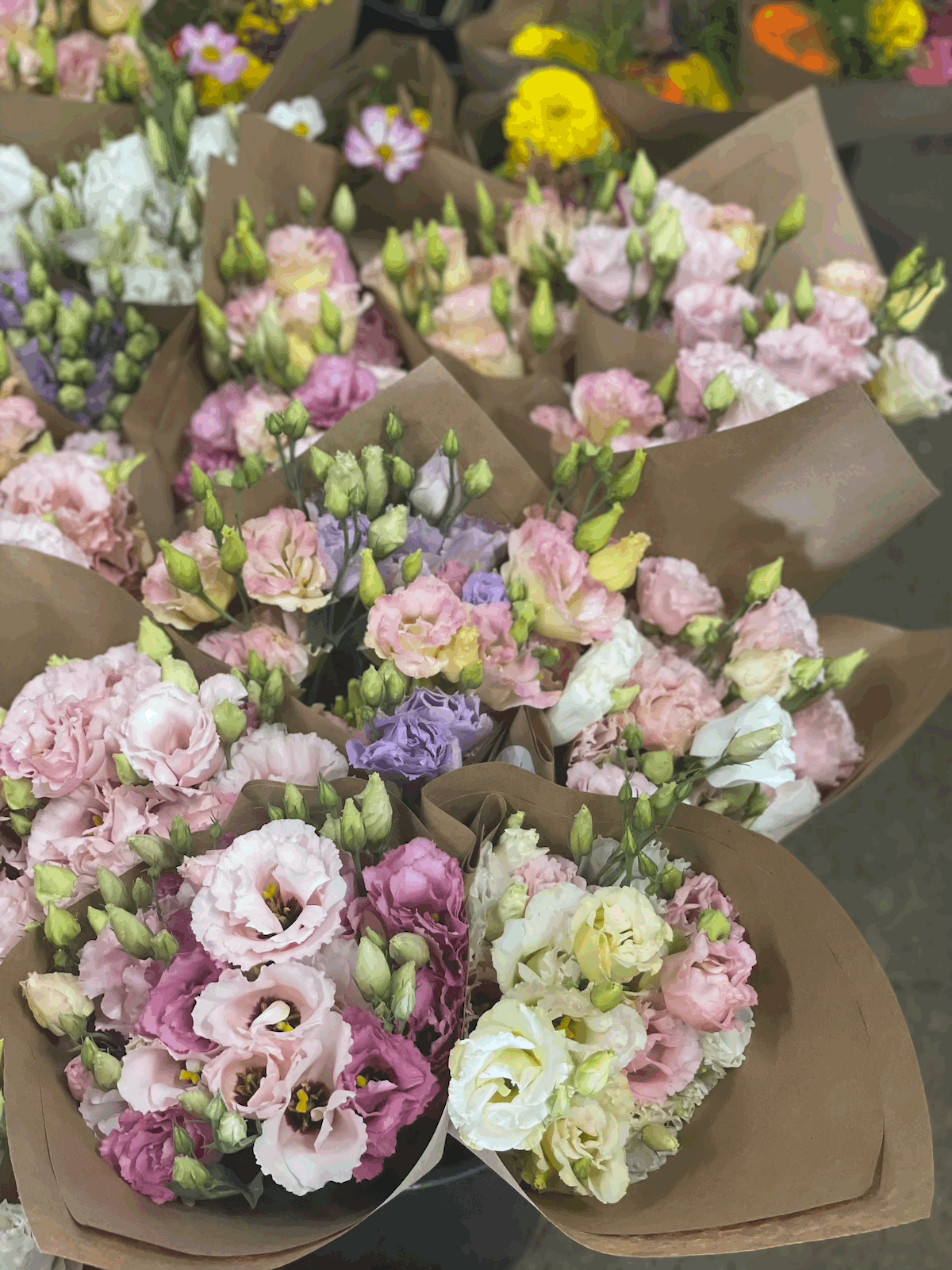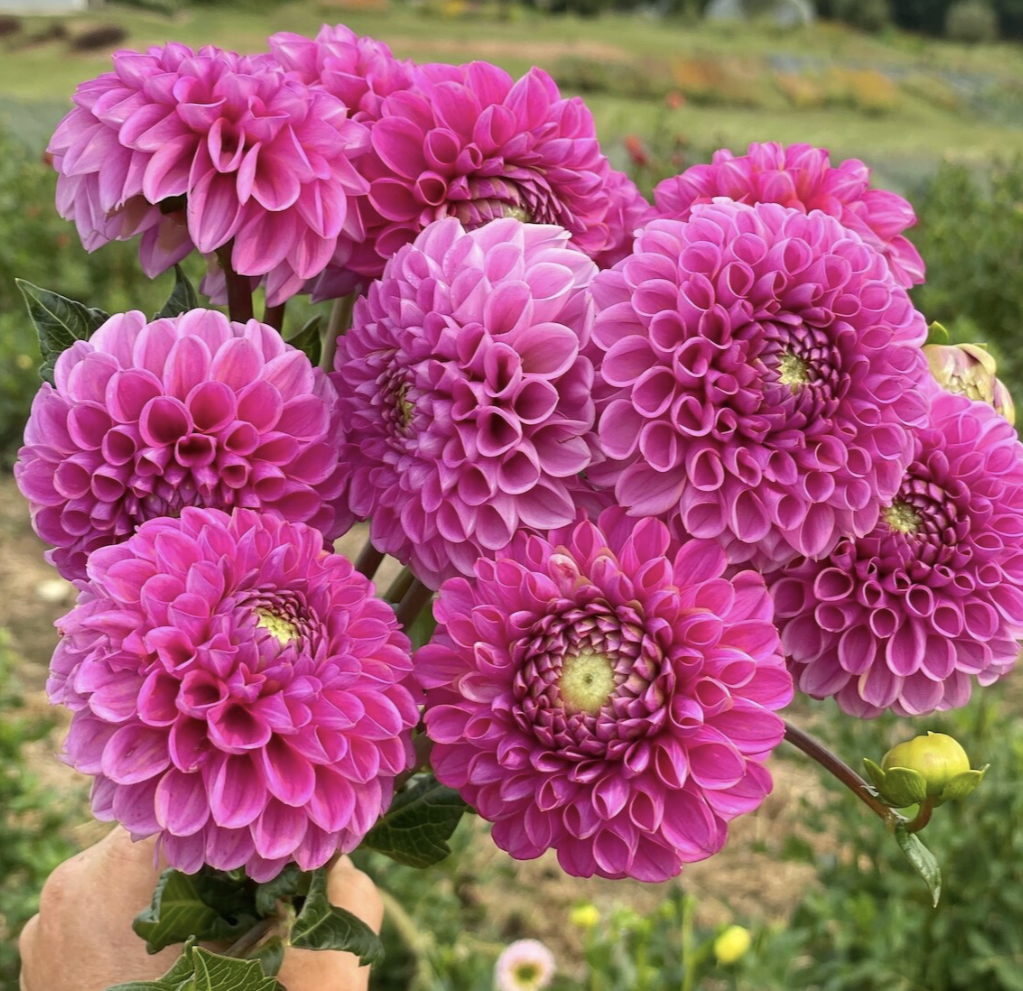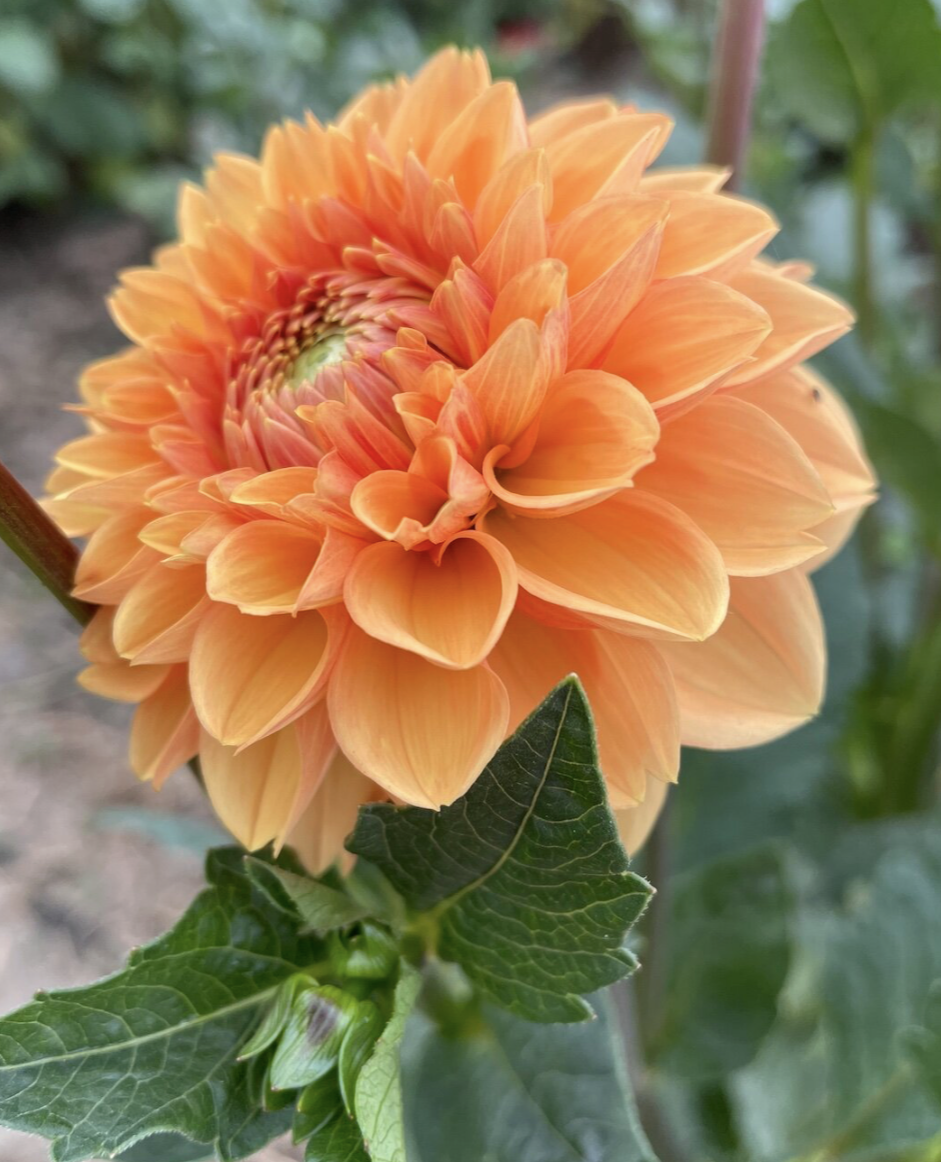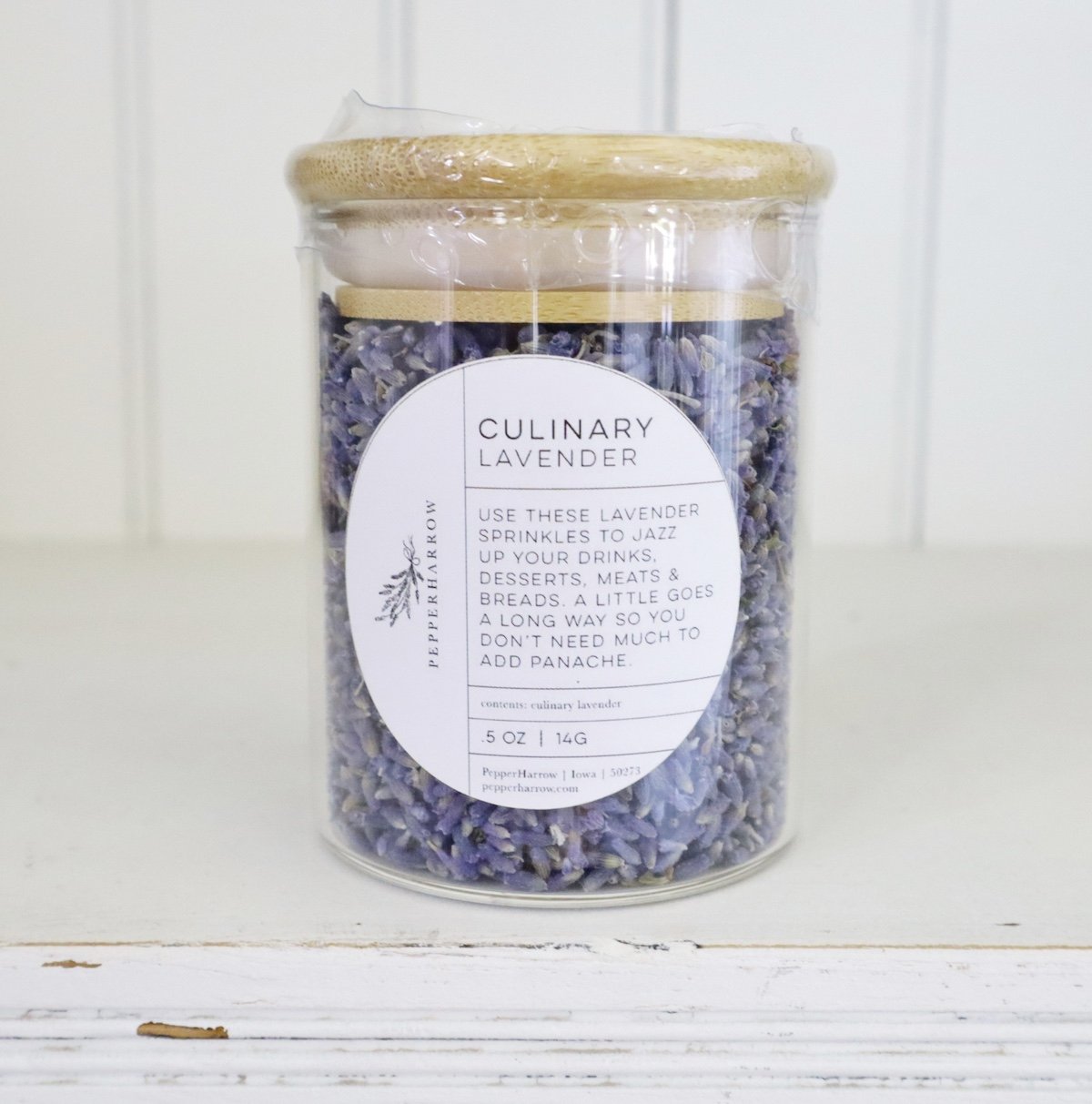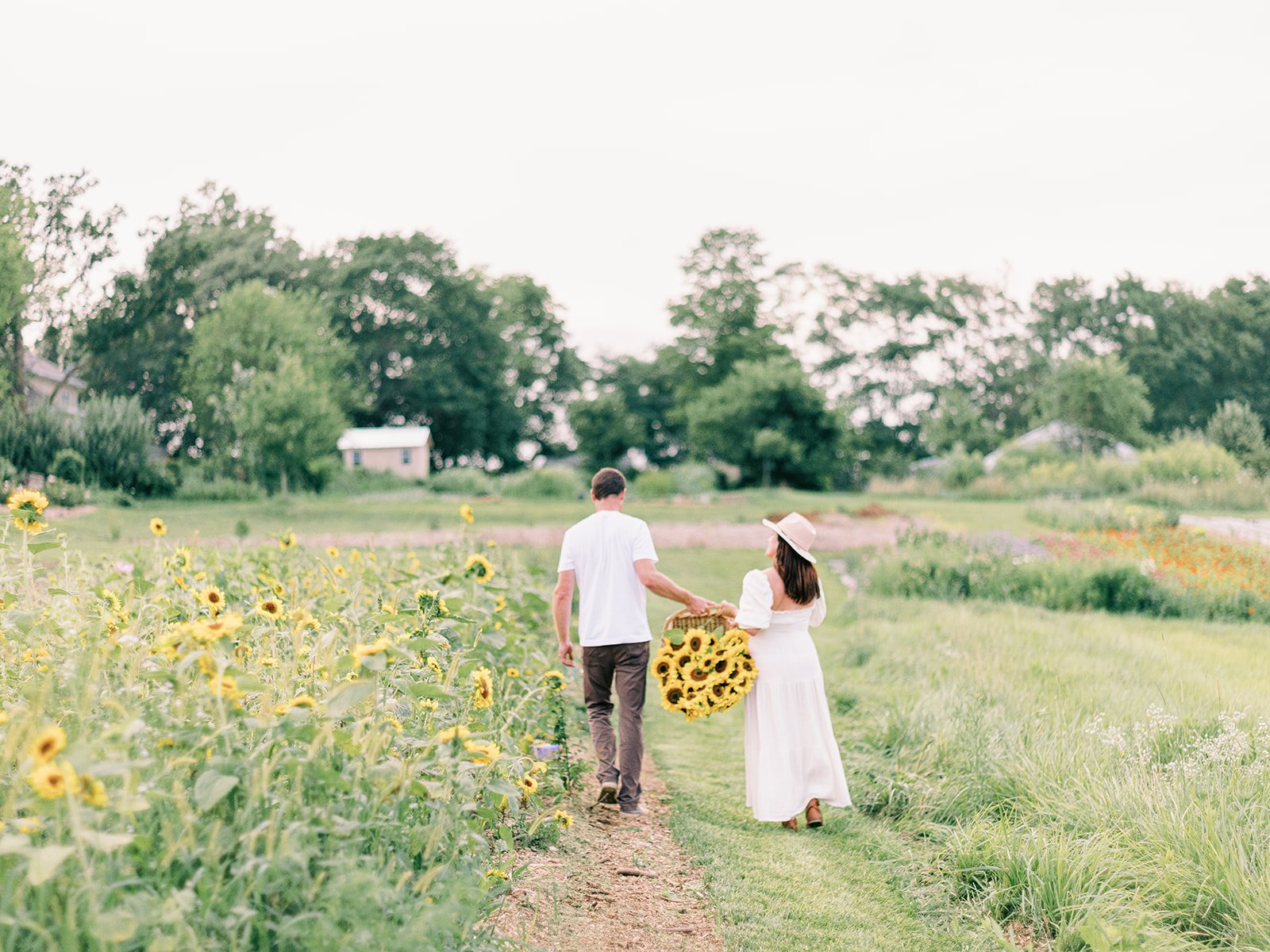
September's Guide to Late-Season Gardening
As the days grow shorter, September brings along a more relaxed gardening style. While many flowers have already reached their peak, there’s still plenty of opportunity to enjoy bountiful blooms and prepare your garden for the cooler months ahead. Whether you’re gathering seeds to start planning for next year, or cutting blooms to dry for winter, here’s a guide to what we’re up to in the garden this time of year.
Dahlias are show stoppers in the garden during the month of September.
Planting Fall-Blooming Perennials: September is the perfect time to plant fall-blooming perennials that will add color to your garden through the autumn months. Consider adding plants like asters, chrysanthemums, and sedum, which thrive in cooler temperatures and provide a late-season burst of color. These hardy perennials also help support pollinators as they prepare for winter.
Sow Cool-Season Flowers: Cool-season annuals such as snapdragons, can be planted in September for flowers as early as possible in spring. These flowers tolerate cooler weather and do a great job staying in place throughout winter to bloom in early spring. We LOVE having early blooming flowers!
Divide and Transplant Perennials: September is an excellent time to divide and transplant overgrown perennials like salvia, peonies, irises, and hostas. Dividing these plants helps rejuvenate them, encouraging healthier growth and more abundant blooms in the coming year. It’s also a good opportunity to rearrange your garden layout and fill in any gaps with divided plants.
Start Planting Spring Bulbs: As the soil cools down, September is an ideal time to start planting spring-blooming bulbs such as tulips, and daffodils. These bulbs require a cold period to establish roots and bloom beautifully in the spring. Planting them now gives them ample time to settle in before the winter freeze
Fertilize and Mulch: Give your plants a nutrient boost with a balanced, slow-release fertilizer to help them store energy for the winter months. Applying a layer of mulch around your plants helps retain moisture, regulate soil temperature, and protect roots from the cold as the weather cools.
Collect Seeds: September is a great time to collect seeds from your favorite flowers for next year’s garden. Look for mature seeds on plants like marigolds, zinnias, and cosmos. Allow the seed heads to dry on the plant, then gently remove them and store the seeds in a cool, dry place. Be sure to label your seeds, so you know what you’ve saved. Collecting seeds allows you to grow plants that are well-adapted to your garden’s conditions.
Gather Flowers to Dry: Flowers are wonderful to enjoy fresh, but are just as pretty dried. We love collecting a few bunches to hang and dry to use for winter wreaths, and dried bouquets. Not all flowers are great as dried. Check out this blog post for our recommendations for the best dried flowers.
Growing flowers in September not only adds beauty to your garden as summer turns to fall but also sets the stage for a healthy and vibrant garden in the seasons to come. Embrace the cooler days and the unique opportunities this month offers to keep your garden thriving. Happy gardening!
XX Jenn & Adam
Lisianthus Varieties We Love to Grow
Lisianthus is a true gem of a flower to grow as a cut flower. It’s a bloom we love because of its delicate, rose-like appearance and long-lasting blooms. At our flower farm, we take pride in growing some of the most unique varieties, each bringing its own charm and color to a bouquet. Let me introduce you to a few of our favorites:
Celeb Misty Pink
The Celeb Misty Pink is a soft and subtle beauty that brings a warm, soft pink hue to any arrangement. Its ruffled petals are layered, giving the flower a full and luxurious appearance. This variety is perfect for adding a gentle touch of elegance to bridal bouquets or romantic centerpieces.
Double Rosanne Terracotta
For those who love earthy tones, the Double Rosanne Terracotta is a standout. Its rich, warm terracotta color adds depth and warmth to any floral display. This variety is particularly striking in autumn arrangements, where its muted color complements the season's palette and act as a nice bridge color that ties everything together. It’s also a great color to use for weddings in the fall, because terracotta has become a popular fall wedding color.
Double Voyage First Love
The Double Voyage First Love is as enchanting as its name suggests. With its delicate pink petals, this variety exudes romance and charm. It’s a favorite for weddings and special occasions, where its soft, pastel tones create a dreamy, ethereal atmosphere.
Double Super Magic Capri Blue Picotee
If you're looking for something truly unique, the Double Super Magic Capri Blue Picotee is a must-see. This variety features striking blue-violet petals edged with a crisp white picotee, creating a stunning contrast. It's a showstopper in any arrangement, adding a touch of magic and whimsy.
Celeb Extra Pink
The Celeb Extra Pink is all about bold, vibrant color. Its hot pink petals are sure to make a statement, bringing energy and excitement to any bouquet. This variety is perfect for celebrations, where its bright color can really shine.
Corelli Light Pink
Last but certainly not least, the Corelli Light Pink is a pure, classic beauty. With its soft blush pink petals, this variety is timeless and elegant. It’s a versatile choice, perfect for adding a touch of sophistication to any arrangement.
Bringing It All Together
Each of these lisianthus varieties has its own unique charm, but they all share a common thread: their ability to elevate any floral arrangement with their beauty, or stand alone by themselves in a breath taking grouping. Whether you’re looking for soft pastels, frilly, double blooms, or something truly unique, lisianthus offers something for every taste. We’re proud to grow these stunning flowers, and we can’t wait to share them with you next growing season!
Earliest Blooming Dahlias
As the days grow warmer and the anticipation of a colorful garden heightens, nothing signifies the arrival of summer quite like the earliest blooming dahlias. At our boutique garden store in Winterset, Iowa, we cherish the moment our first dahlias begin to unfurl their vibrant petals. Among our favorites are Linda's Baby, Hillcrest Suffusion, Caitlin's Joy, Isabel, and Sylvia. Each of these dahlias brings its own unique charm to the garden, promising a spectacular start to the blooming season.
Linda's Baby captivates with its soft, pastel peach petals, making it perfect for both garden beds and containers. Hillcrest Suffusion boasts large, fully double blooms in a striking blend of lavender and white. Caitlin's Joy brings a vibrant magenta hue to the garden, ensuring a continuous display of color. Isabel exudes elegance with its creamy yellow blooms, providing a gentle transition into the dahlia season. Lastly, Sylvia stands out with its bright orange-red flowers, adding a dynamic touch to the garden.
Planting early blooming dahlias like these can transform your garden into a tapestry of color and texture. For the best results, choose a sunny location, prepare well-draining soil rich in organic matter, and plant your dahlias after the last frost. Regular watering, fertilizing, and support will ensure your dahlias thrive and bloom beautifully.
As the days grow warmer, nothing signifies the peak of summer (mid-season) quite like dahlias in bloom. At our flower farm, we cherish the moment our first dahlias begin to show their petals. Among the earliest to bloom this year include: Linda's Baby, Hillcrest Suffusion, Caitlin's Joy, Isabel, and Sylvia. Each of these dahlias brings its own unique charm to the garden, and they make lovely bouquets as well!
Linda’s Baby
Linda's Baby is a delightful dahlia that captivates with its soft, pastel peach petals. This variety is known for its abundant blooms, making it perfect for both garden beds and containers. The flowers of Linda's Baby are medium-sized, with perfectly formed petals that create a charming, almost whimsical appearance. This dahlia is a true early bloomer, often gracing our garden with its presence in late spring to early summer, setting the stage for a season full of floral beauty.
Hillcrest Suffusion
Hillcrest Suffusion is a showstopper in any garden, boasting large, fully double blooms in a pretty peach color. The petals of this dahlia are beautifully arranged, creating a lush and full appearance. Hillcrest Suffusion is a vigorous grower, producing an abundance of flowers that make it a favorite among gardeners and florists alike. Its early blooming nature ensures that it adds a touch of elegance to the garden right from the start of the season.
Caitlin’s Joy
Caitlin's Joy is a vibrant dahlia that truly lives up to its name, bringing joy to any garden with its bright, cheerful flowers. The blooms are a pretty mix of orange and pink, making it a little bit of a chameleon in the garden. This variety is known for its prolific blooming habit, ensuring a continuous display of color throughout the summer. Caitlin's Joy is a robust plant, capable of withstanding the varying weather conditions of early summer, making it a reliable and delightful addition to the garden.
Isabel
Isabel is a classic beauty, with large, perfectly formed blooms in a striking purple color. This dahlia exudes elegance and sophistication, making it a favorite for both garden displays and floral arrangements. Isabel's early blooming nature means it often appears in our garden as one of the first dahlias to flower, providing a gentle and welcoming transition into the dahlia season. Its sturdy stems and abundant blooms make it a versatile and valuable addition to any garden.
Sylvia
Sylvia is a standout dahlia with its bright orange flowers that are impossible to miss. The blooms are large and fully double, with a fiery color that adds a dynamic and energetic touch to the garden. Sylvia is an early bloomer, often appearing alongside the first roses and peonies of the season. Its striking color and bold presence make it a favorite for gardeners looking to create a vibrant and eye-catching display.
Creating a Stunning Early Blooming Dahlia Garden
Planting early blooming dahlias like Linda's Baby, Hillcrest Suffusion, Caitlin's Joy, Isabel, and Sylvia can help you to add color to your garden. Here are a few tips to ensure your dahlias thrive and bloom early:
Choose the Right Location: Dahlias love sunlight, so choose a spot in your garden that receives at least six hours of direct sunlight each day.
Prepare the Soil: Dahlias prefer well-draining soil rich in organic matter. Incorporate compost or well-rotted manure into your soil to provide the nutrients they need.
Planting Time: In zone 5b it's best to plant dahlia tubers after the last frost, typically in mid May to early June. For earlier blooms, you can start your dahlias indoors in pots and transplant them once the danger of frost has passed.
Watering and Fertilizing: Keep the soil consistently moist but not waterlogged. Fertilize your dahlias regularly with a balanced, low-nitrogen fertilizer to promote healthy growth and abundant blooms.
Support and Maintenance: As your dahlias grow, provide support with stakes or cages to keep the stems upright. Regularly deadhead spent blooms to encourage continuous flowering.
At our flower farm, we're passionate about helping you create a stunning garden filled with beautiful blooms. Whether you're looking for early blooming dahlias or need expert advice on gardening, we're here to help. Visit our online web store to explore our wide selection of dahlia tubers. Our online shop usually opens up in early January, with dahlia tubers shipping out mid-April.
Happy gardening!
Late Summer Planting: Flowers for a Gorgeous Fall Bloom
It’s time to sneak the last little bit of flower goodness into the garden! July is the perfect time, and albeit, the last opportunity to add one last planting to have extra flowers for fall bouquets. Focusing on flowers that bloom in rich autumn hues of burgundy, yellow, red, brown, and orange, can transform your outdoor space into a vibrant tapestry that mirrors the changing leaves. Here’s a guide to help you select and plant the best varieties for a stunning fall display.
Seasonal Colors for Fall
Fall gardens thrive on deep, warm colors. When choosing flowers, think about the seasonal transition from summer's brightness to autumn’s earthy tones. Here's a breakdown of ideal flowers and their respective colors to create a cohesive fall garden:
Burgundy: Amaranth, Celosia
Yellow: Marigolds, Zinnias
Red: Zinnias, Celosia, Gomphrena
Brown: Amaranth, or Specialty grasses like Panicum (Switchgrass) or Millet
Orange: Marigolds, Zinnias, Strawflower, Sunflower
Ideal Flowers for Fall Blooms
1. Zinnias:
Zinnias are versatile and easy to grow, producing vibrant flowers that last until the first frost. For fall colors, choose varieties like 'Benary's Giant' for bold, robust blooms in red, orange, and yellow.
2. Amaranth:
Amaranth offers striking, upright flower spikes that add height and drama to your garden. Varieties like 'Hopi Red Dye' and 'Love-Lies-Bleeding' come in deep burgundy and red shades.
3. Celosia:
Known for their unique, flame-like blooms, Celosia varieties such as 'Cockscomb' and 'Plume' come in rich burgundy and red tones. They add an exotic touch to any garden.
4. Marigolds:
Marigolds are hardy, easy to grow, and perfect for adding bright yellows and oranges to your fall garden. French Marigolds and African Marigolds are both excellent choices.
5. Specialty Grasses:
Ornamental grasses like Panicum (Switchgrass) and Millet provide a soft, flowing contrast to the bold colors of fall flowers. Their feathery plumes add interesting texture and movement to the garden.
6. Gomphrena, also known as Globe Amaranth, features clover-like blooms in shades of burgundy, red, and purple, which are perfect for fall.
7. Sunflowers bring a classic autumn feel with their large, bright yellow blooms. Varieties like 'Autumn Beauty' offer shades of red, orange, and yellow, fitting perfectly into a fall-themed garden.
8. Strawflowers are another excellent choice, with their sturdy, papery blooms in warm shades of yellow, orange, and red, making them great for both garden display and dried arrangements.
Pro Tips for Planting in Hot Weather
Planting in early July can be challenging due to the heat. Follow these tips to give your seedlings the best start:
Pre-Wet the Ground:
Before planting, thoroughly water the soil to ensure it's moist and cool. This helps reduce transplant shock and gives seedlings immediate access to water.
Evening Planting:
Plant in the evening when temperatures are cooler. This allows seedlings to acclimate overnight before facing the next day’s heat.
Consistent Watering:
Water your newly planted flowers consistently, especially during dry spells. Morning watering is ideal to avoid mildew and fungal issues.
Following these best practice tips and by choosing the right flower varieties, your garden will burst with fall colors, creating a stunning display that will delight you and your visitors. Happy growing!
Explore Culinary Lavender in Your Kitchen
Culinary lavender adds a unique floral twist to sweet and savory dishes. It elevates cookies, cakes, lemonade, cocktails, tea, roasted meats, vegetables, ice cream, and pastries. The blog post offers tips for using culinary lavender and sells it. It also details an online course on growing lavender in the Midwest.
Culinary lavender isn’t just a pretty addition to your garden; it’s a great ingredient that can elevate a wide range of dishes. Whether you’re baking, mixing drinks, or experimenting with new flavors, culinary lavender adds a unique floral twist that delights the senses.
At the heart of our culinary lavender is its ability to enhance both sweet and savory creations. Picture yourself baking a batch of cookies or a warm, yummy cake—just a sprinkle of dried lavender can transform these treats into something extraordinary. The delicate floral notes mix in beautifully with the sweetness, creating a dessert that’s both elegant and aromatic.
Sipping on a refreshing glass of lavender-infused lemonade on a warm summer’s day is a dream. The floral hints complement the tartness of the lemon, making every sip a burst of flavor. Or perhaps you prefer a craft cocktail with a twist? A dash of culinary lavender syrup can turn a simple drink into a sophisticated libation, perfect for impressing guests or enjoying a quiet evening at home.
Tea anyone? A dash of dried lavender buds can elevate your favorite herbal blend, adding depth and a soothing aroma to your cup. So good!
Our culinary lavender comes packaged in a convenient re-closable jar, containing approximately 0.5 ounces of dried buds. This ensures freshness and easy storage, so you can sprinkle just the right amount into your culinary creations without any waste.
Remember, a little goes a long way with culinary lavender. Its potency means you only need a small amount to make a big impact on flavor. Experiment with different dishes—whether it’s savory dishes like roasted meats or vegetables, or sweet treats like ice cream and pastries. The possibilities are endless, and each dish becomes a canvas for your culinary creativity.
Are you eager to cultivate lavender but unsure of where to begin? Our Lavender Growers Masterclass is tailored just for you! This comprehensive online course is designed to equip you with the essential skills to successfully grow lavender in the Midwest.
What You'll Discover:
Optimal Strains for Our Region: Learn which lavender strains thrive best in the Midwest climate, ensuring your plants that flourish.
Seasonal Care Tips: Master the art of nurturing lavender from planting to winter maintenance, ensuring healthy growth and longevity.
Financial Considerations: Gain insights into the investment costs associated with lavender cultivation, empowering you to plan effectively for your venture.
Why Enroll:
Expert Guidance: Benefit from expert-led sessions that provide practical knowledge and proven techniques tailored to our regional conditions from successful lavender farmers.
Convenient Online Format: Accessible from anywhere, our online platform allows you to learn at your own pace while gaining valuable expertise.






